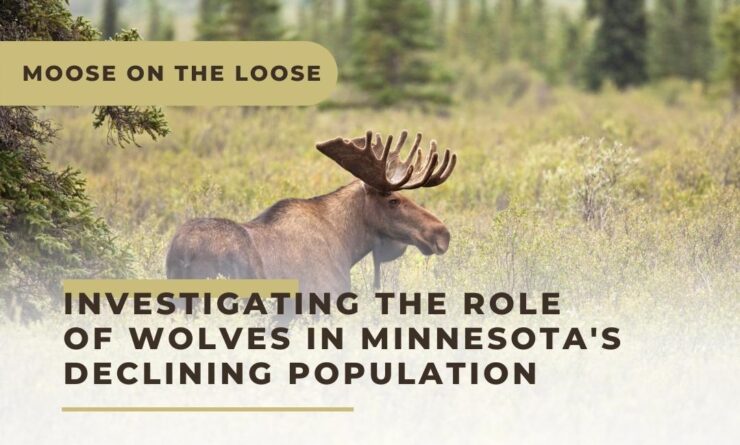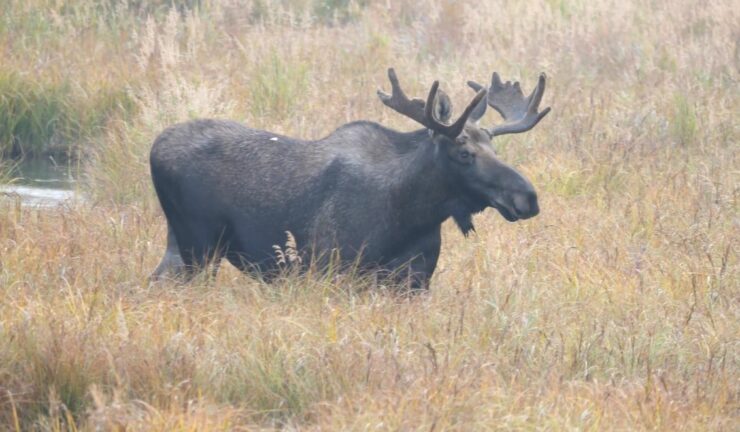Minnesota’s moose population has declined sharply over the last few years and scientists are searching for answers as to why. One possible culprit has been identified as the presence of wolves in the region, as the wolves have been found preying on the moose population.
In this article, we take a look at the evidence and explore the possible causes for the drastic decline in Minnesota’s moose population.
Background of Minnesota’s moose population
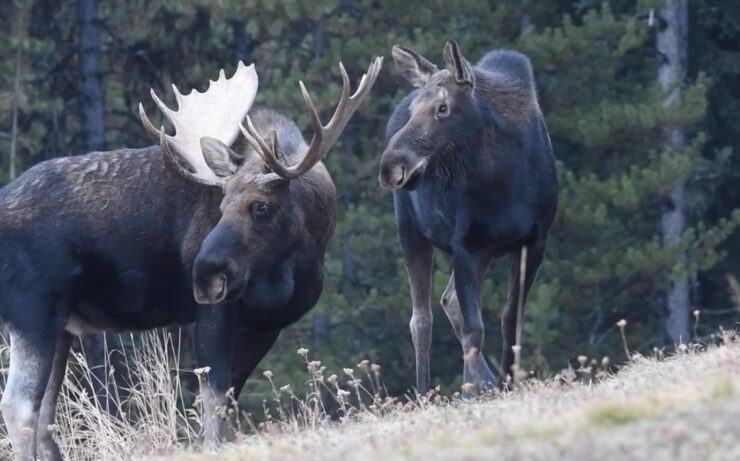
Minnesota is once again experiencing a decline in its moose population as numbers in recent years have dropped considerably. The causes of this decline are disputed, but many experts agree that the presence of wolves, which are native to Minnesota, may play an integral role.
Minnesota was historically home to robust moose populations, with extremely successful conservation efforts resulting in the state’s first official count of 3,500 animals in the early 1950s. That number continued to rise until roughly 2007 when both aerial and ground surveys indicated that the population had fallen just shy of 8,000. By 2013 surveys indicated a marked decline in the state’s moose population and estimates show just 4,760 remaining as of 2020 – an almost 50% decline since 2010.
While there remains much debate as to what is causing this rapid decline in numbers (some citing climate change or brain worm infection) attention has recently turned to wolves due to their well-known predatory nature and rich history within Minnesota. Wolves were declared Endangered Species in 1974 under the U.S Endangered Species Act and began growing rapidly shortly after due to successful repopulation efforts by local conservation agencies; since then wolf populations and their range have increased steadily across Minnesota – an estimated 2700 wolves roamed within 259 packs spread throughout 33 counties by early 2020 partially overlapping with Minnesota’s moose range – representing an increase from 654 individuals spread over 106 packs 10 years prior. This potential overlap provides wildlife experts with room for caution when investigating the potential interplay between wolves and Minnesota’s drastic reduction of its moose population.
Overview of the wolf population in Minnesota
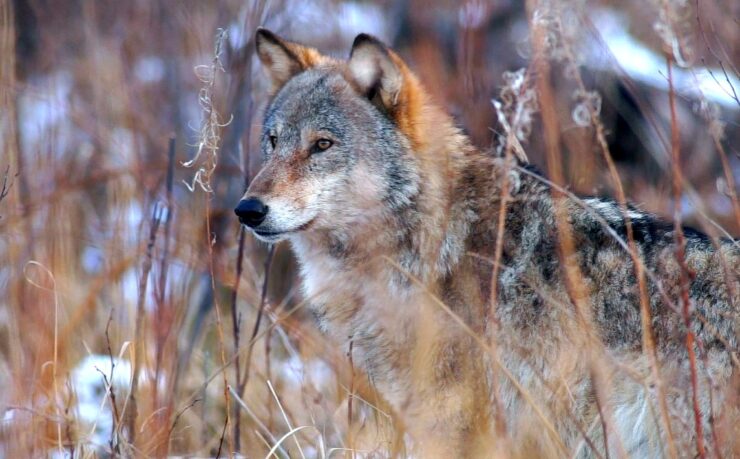
Wolves (Canis lupus) are iconic species of the Minnesota landscape and are deeply rooted in the state’s history and ecology. Wolves were once widespread across the state, but by the 1950s they had declined to nearly zero due to intensive trapping, poisoning, and shooting. As a result of wolf management efforts starting in 1974, wolves have since recovered—expanding from a few individuals to over 2,700 wolves across about 500 packs. As of 2020, Minnesota has the second-largest population of wolves in America behind Alaska.
In 1978 Minnesota was among one of the first states to list wolves as endangered through federal legislation. This allowed for recovery efforts and protected wolf populations from hunting and harassment until 2012 when wolves were delisted based on population data evidence that supported their stability for long-term survival in Minnesota. Currently, Minnesotan wolf populations span across most parts including northern, central forested regions such as Superior National forest as well as southern portions of Minnesota nearer to urban communities like Minneapolis-St Paul and St Cloud.
In order to maintain healthy population totals, The Minnesota Department of Natural Resources works in partnership with tribes, other government elected officials, and concerned stakeholders maintaining delicate stakeholder relationships with sportsman groups while developing annual hunting quotas based on population survey results conducted annually.
Moose Population Decline
Minnesota’s moose population has been on the decline over the past decade, and while wolves are often seen as the primary culprit, the cause of this dramatic reduction is still unknown.
In this section, we will address the possible effects that wolves may have had on Minnesota’s moose population, as well as explore some of the potential causes behind the dwindling population.
Evidence of a decrease in the moose population
Minnesota is home to thousands of moose, but the population has been steadily declining in recent years. According to the Minnesota Department of Natural Resources, the population dropped from an estimated 8,840 in 2006 to just 4,180 in 2018.
The number of moose harvested by hunters has gone down greatly as well: Whereas 1,532 permits were issued for moose hunting in 2009, only 216 permits were granted in 2017. However, this does not necessarily mean that the moose population has been systematically overhunted. In 2010 and 2011, only 147 and 263 permits were issued respectively. While there have now been a few years with slightly higher permit numbers due to mild winters that allowed some of the herd to survive longer and potentially reproduce more, it is clear there has still been a decrease overall in recent decades.
One major factor behind this decline could be predation by wolves. Wolves are a major predator of moose; they tend to target weak and injured animals more than healthy ones and devour them as quickly as possible before another predator arrives on the scene. Although wolves can be beneficial for prey by targeting aging or unhealthy animals especially, extensive over-predation by wolf packs can exhaust food resources drastically and cause a significant decrease in population sizes over time — something conservationists may need to consider when trying to protect Minnesota’s remaining moose population from further decline.
Causes of moose population decline
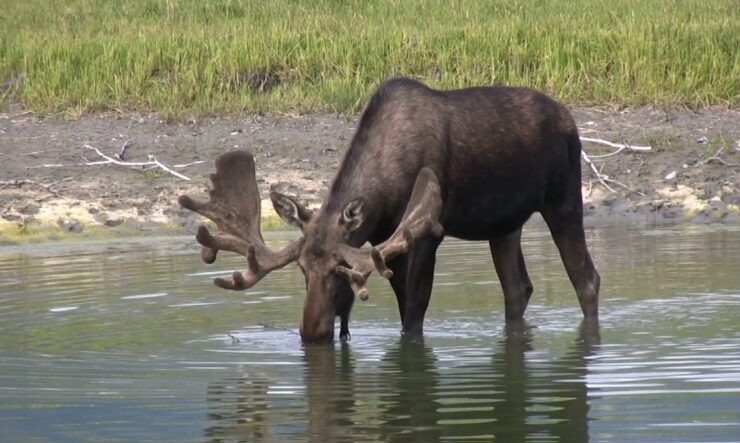
Climate change, disease, poaching, habitat destruction, and motor vehicle accidents are all factors believed to contribute to the decline in moose populations.
Climate change is thought to be an important factor due to the increasing length of warmer seasons and the spreading of parasites within their habitat. Diseases such as brain worm and winter tick infestations may all contribute to the moose population decline in many areas. Poaching may also be an issue as human encroachment increases, especially near residential areas. When specific individual animals are targeted this can also lead to a decrease in population numbers.
Habitat destruction affecting seasonal habitats and migratory corridors of moose may add stress or make it difficult for them to find nutrition during certain times of the year, leading to a further decline in numbers due to malnutrition or unable able to produce young successfully. Motor vehicle collisions causing direct death or injury can also cause further population decreases through mortality or leaving less mobile individuals that lack opportunity for successful breeding.
Working together towards conservation initiatives combined with careful monitoring and evaluation is key for reversing the trend of moose population decline across North America.
Wolf Population Increase
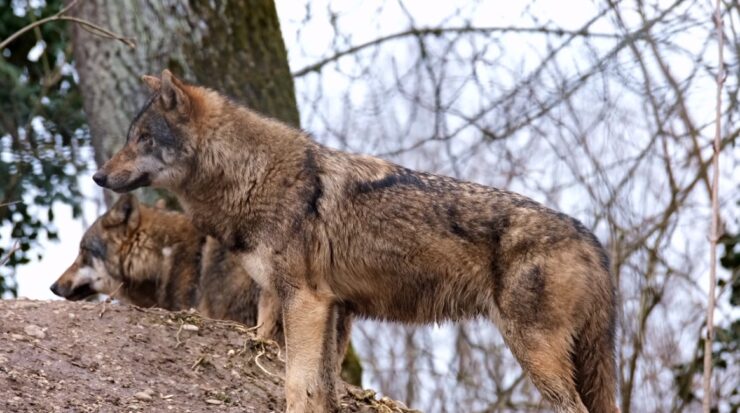
The wolf population in Minnesota has increased significantly over the past several years, and it is believed to be a culprit in the decline of the state’s moose population.
In this section, we will look into the reasons why wolves are thought to be behind the decrease in moose numbers, and how the state and scientists are responding to the situation.
Evidence of a Rise in the wolf population
Evidence of a rising wolf population has begun to surface in several different areas across the globe. In the United States, Gray Wolf populations are showing an increasing trend due to recovery efforts. From 2016-2017, the United States Fish and Wildlife Service estimates that the total population reached a minimum of 16,000 wolves. Other wolves per 1000 square miles in Wyoming and Montana increased significantly.
In Europe, wolves have re-established themselves in areas they had been absent from for centuries due to protection efforts and rewilding programs increasing their numbers by 60%. Wolves once believed extinct such as the Iberian Wolf has now returned with large dens being discovered in central Portugal.
In addition to increased sightings of wolf packs and dens in countries including Poland, France, Germany, and Norway which have exceeded expectations during a time when environmental changes are having considerable effects on species diversity and distribution rates across many regions. These developments demonstrate an overall increase in the European Wolf Population when combined with current trends observed on other continents. In Russia for instance between 2013 – 2015, 82 new wolf packs were established representing a 9% increase in local numbers.
These observations do not even take into account observations taken from central China, Mongolia, or South Africa where populations of Gray Wolves are slowly beginning to rise. This shows that as environmental preservation efforts begin to come into effect we may soon be able to witness an international growth of the wolf population unimagined decades ago.
Causes of wolf population increase
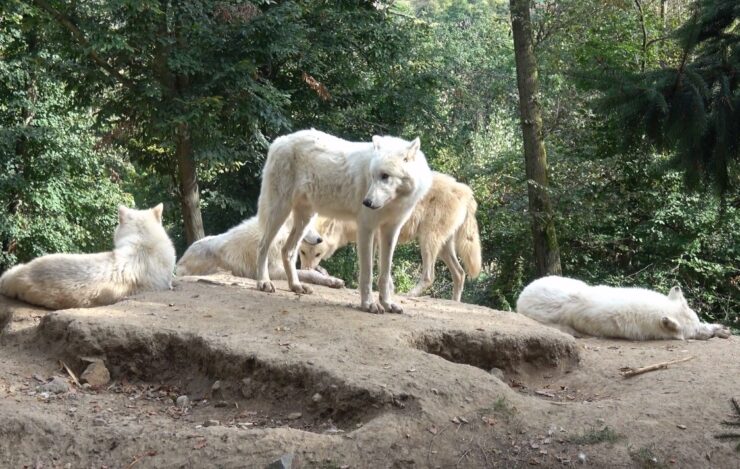
In recent decades, there have been drastic increases in wolf populations worldwide. This rise in population has been an effect of multiple factors including conservation efforts, changes in land use, and expanding habitat ranges. Understanding these causes can help us better develop strategies to protect wolves and their habitats.
Conservation efforts are one of the most important reasons behind the increasing wolf population. The implementation of laws that promote the conservation of wolves and their habitats allows for greater protection and recovery for these species. Additionally, public awareness initiatives about wolves’ roles in the ecosystem and threats to their populations have helped reduce poaching and other forms of illegal hunting or killing.
Changes in land-use also play a role in influencing wolf population size. For example, wolves are likely to benefit from an increase in traditional grazing activities such as sheep or cattle herding, as this creates more prey for them to hunt and allows the animals more opportunities to create new dens or territories that are safe from humans. Additionally, large swaths of land left undisturbed by human activity allow more room for wolves to roam freely without worrying about human interference.
Finally, some wolf species may be taking advantage of expanding habitats due to warming climate trends; they may migrate into historically unoccupied parts of the world where resources such as food and shelter are available in abundance. This could especially be seen with Arctic wolf populations which have seen a recent influx into various regions including Scandinavia or Canada due to rising temperatures that have allowed them access into larger areas than previously possible due to extreme winter weather conditions such as deep snowpack or ice cover.
Wolves and Moose
Minnesota is home to both healthy moose and wolf populations. The interactions between these two animals have been studied extensively and much debate has arisen over whether or not wolves are responsible for the decline in Minnesota’s moose numbers.
Let’s dive into the data and discuss the relationship between wolves and moose.
How Wolves are Affecting Minnesota’s moose population
The relationship between them is complex and contested, depending on who you talk to and the context in which it is discussed. Wolves are the top predator of the Minnesota landscape, yet studies have suggested that their presence can lead to a higher risk of mortality for moose.
Although wolf predation is not considered to be the primary cause of Minnesota’s declining moose population, it does affect the number of calves that are born and survive each winter season. Wolves hunt in packs and use their superior abilities to single out weak or afflicted animals — usually gravitating towards smaller or juvenile healthy male or female animals — leaving them more vulnerable to predators due to depleted energy levels caused by fleeing. In addition, wolves can compete with moose by accessing resources such as food sources which can affect calving success.
Though human-caused mortality rates have been identified as a major factor in declining moose populations, studies suggest that their interaction with wolf predation has resulted in an average of 4-7% population decrease annually — an indication that wolves are indeed having a significant impact on the natural balance within the Minnesota landscape. While ongoing research continues to investigate how this impact manifests itself further, conservation strategies are needed for both species that aim to protect natural resources while still meeting management goals for both species.
Possible solutions to the moose population decline
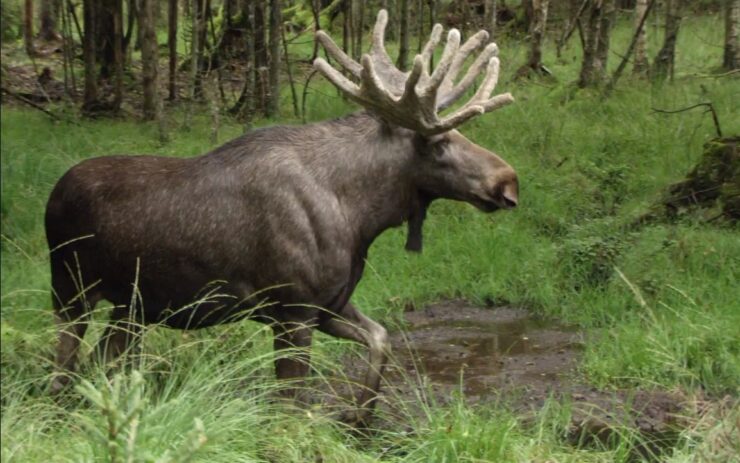
In areas of North America where the moose population has declined, wolves may be a source of concern. Studies have suggested that the decreasing moose population is due to an increase in wolf numbers and predation rate. In some cases, wolves can take up to one-third of the moose calves born each year. In order to protect the future of both species, different strategies such as culling, or wolf relocation may need to be employed.
Culling: Culling involves the removal of infringing animals from a given area. It is seen as a solution for some because it reduces the overall number of wolves in an area and subsequently reduces their impact on moose populations. While culling is sometimes necessary for conservation purposes, its efficacy must be rigorously studied to ensure it does not have negative impacts on ecologies more broadly or other animal species that interact with wolves or moose also residing in the environment.
Wolf Relocation: Wolf relocation may be used if there is no other way to reduce predation pressure from wolves on moose populations without causing irreparable damage to broader ecosystems or other species in a given locality. In these cases, the captured wolf would be transported away from an overpopulated area and rehomed in another space that has appropriate resources and prey availability so that their impact would remain minimal while providing them with suitable living conditions away from the competition with other predators who seek out prey items such as deer, elk and Caribou which are also impacted by habitat fragmentation and especially human activities such as urbanization.
Recommendations for further research
Despite the abundance of information available on the characteristics of roast categories and common types, there is significant room for further research in this field. Tea tasting and roasting practices vary depending on the country of origin, making it worthwhile to conduct more extensive international studies.
Additionally, exploring more specific and advanced topics related to roasting such as flavor profiling, brewing techniques, and sensory analysis could provide a comprehensive picture of different types of specialty coffees. Analysis of efficiency improvements in the various stages of coffee processing should also be encouraged to reduce waste and encourage sustainability initiatives that benefit local populations that rely on small-scale coffee production.
Ultimately, such research will not only help clarify details about existing product lines but also lead to new discoveries that bring greater variety, better quality coffees, and an enriched experience for consumers worldwide.
FAQs
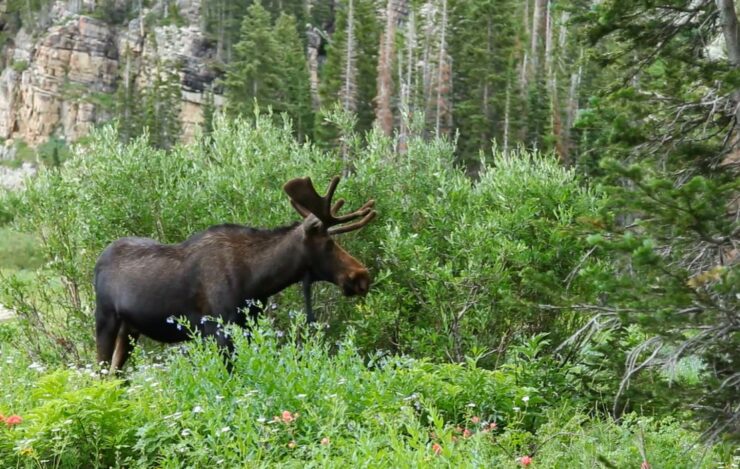
What is being done to protect Minnesota’s moose population?
Efforts are being made to protect Minnesota’s moose population, including habitat restoration, disease research, and hunting regulations.
Is hunting a significant factor in the decline of Minnesota’s moose population?
Hunting has been identified as a potential factor in the decline of Minnesota’s moose population, but it is not believed to be the primary cause.
How can we prevent the decline of Minnesota’s moose population?
Preventing the decline of Minnesota’s moose population will require a combination of efforts, including habitat restoration, disease research, hunting regulations, and predator management.
What impact does climate change have on Minnesota’s moose population?
Climate change can impact them by altering their habitat and making them more susceptible to disease and parasites.
Are there any programs to monitor Minnesota’s moose population?
Yes, the Minnesota Department of Natural Resources conducts regular surveys and monitoring programs to track the state’s moose population.
Can wolves be relocated to protect Minnesota’s moose population?
Relocating wolves is a complex and controversial process that may not be an effective solution for protecting Minnesota’s moose population.
How do predators like wolves affect the ecosystem in Minnesota?
Predators like wolves play an important role in the ecosystem in Minnesota by controlling the populations of prey species and maintaining a healthy balance in the ecosystem.
How does the decline of Minnesota’s moose population impact the state’s economy?
The decline can impact the state’s economy by reducing tourism revenue and affecting the hunting and fishing industries.
Is the decline of Minnesota’s moose population unique to the state?
The decline of moose populations is not unique to Minnesota and is a concern in other states and countries as well.
What can individuals do to help protect Minnesota’s moose population?
Individuals can help protect Minnesota’s moose population by supporting conservation efforts, reporting sightings of moose and wolf activity, and being responsible hunters and outdoors enthusiasts.
We recently wrote about the deadliest animals in Minnesota, which you might find interesting.
Conclusion
After looking into the data, it can be concluded that Minnesota’s moose population is being affected by wolves. Other factors, such as climate and habitat destruction, are likely to have some impact as well.
Despite a few possible mitigating factors, the evidence strongly suggests that wolves are indeed having a significant negative impact on the moose population.

